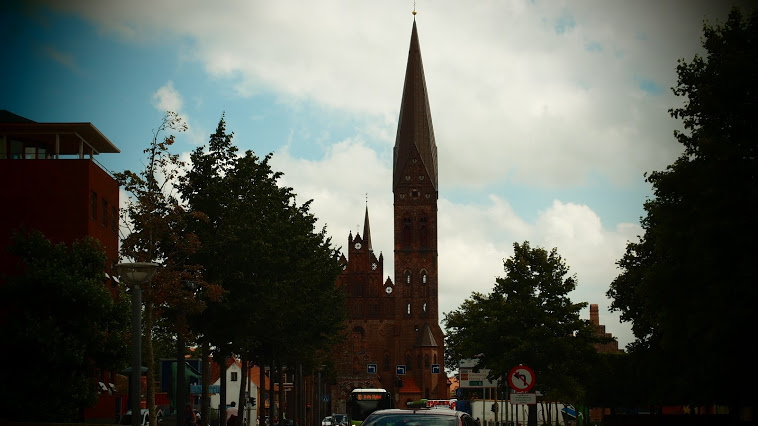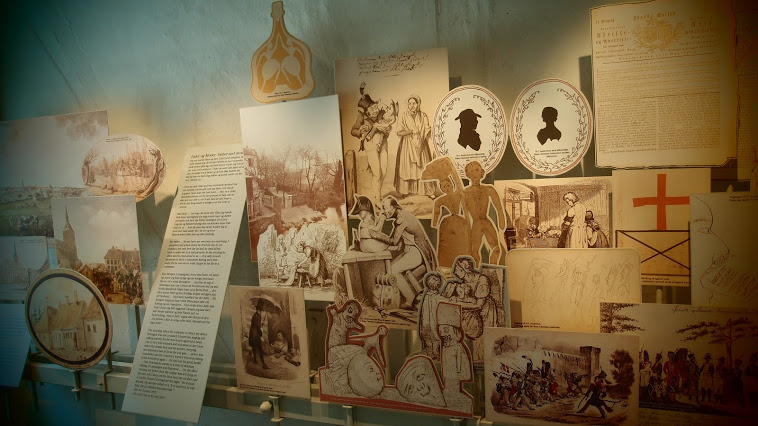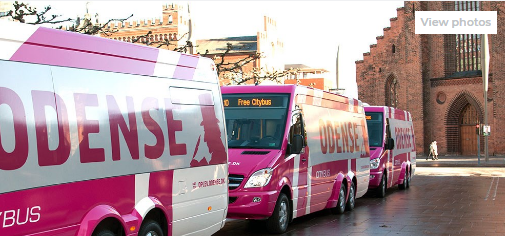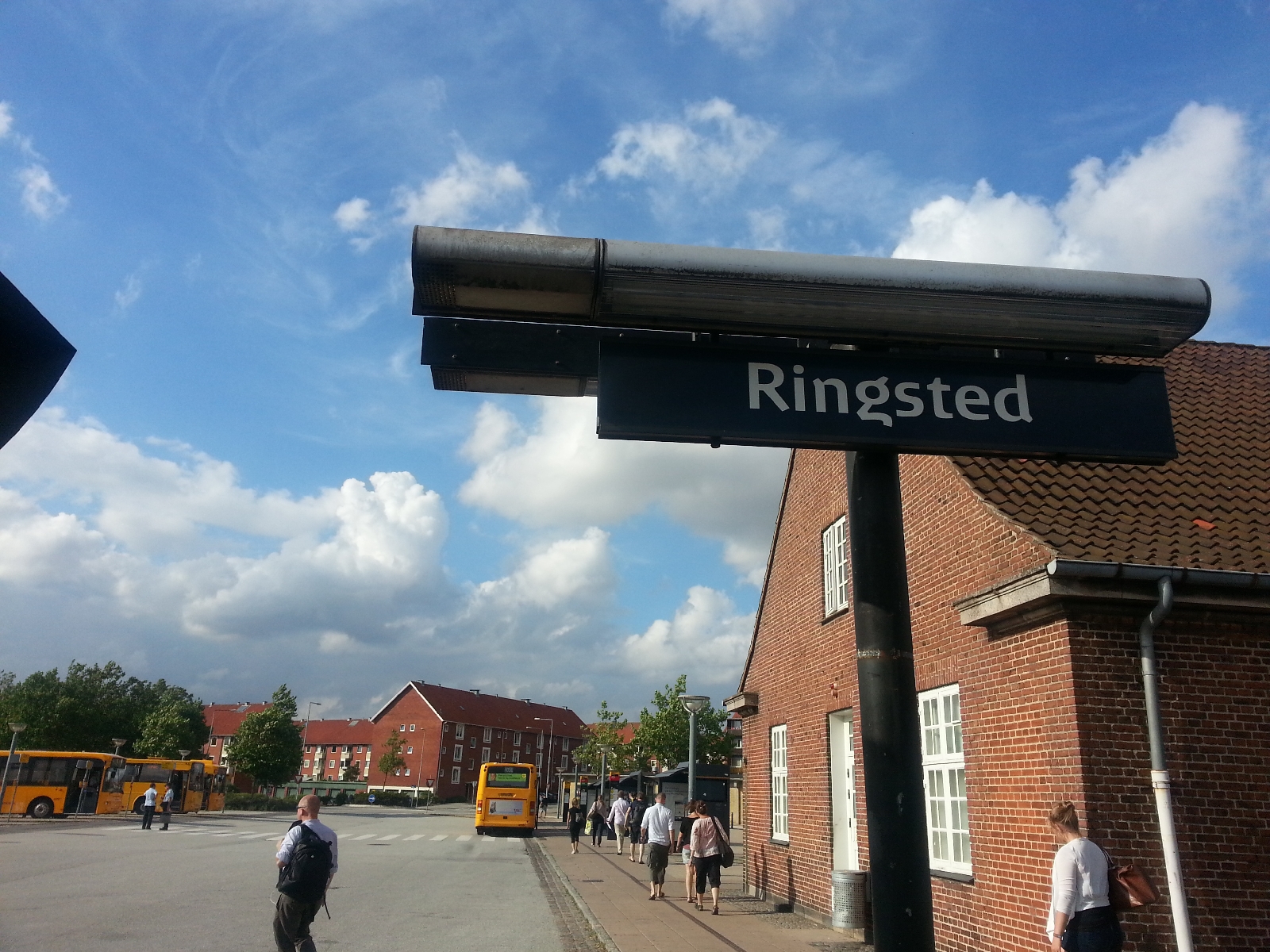A Journey to Escape the Heat: A 2013 Summer Trip through Finland, Sweden, Norway, and Denmark
This travelogue was updated in 2020. Please note that operating hours can vary depending on the season and that there may be regular closure days as well as closures on specific holidays such as Christmas, Epiphany, and New Year's Day. Therefore, when planning your schedule, be sure to check Google Maps or the official websites directly.
On the fourth day of my trip in Denmark, I ventured to the city of Odense, the birthplace of the world-renowned fairy tale writer, Hans Christian Andersen. Andersen, who is one of Denmark's most celebrated figures, came from humble beginnings as the son of a poor shoemaker. Despite his challenging upbringing and lack of formal education during his early years, Andersen's determination led him to pursue his studies later in life, eventually becoming a prolific writer.
Many of Andersen's fairy tales are beloved around the world and have likely touched our childhoods at some point. Stories like *The Ugly Duckling*, *The Nightingale*, *The Little Mermaid*, *The Snow Queen*, *The Wild Swans*, *The Emperor's New Clothes*, *Thumbelina*, *The Little Match Girl*, and *The Red Shoes* are just a few of the timeless classics he authored. Visiting Odense, where Andersen's legacy still thrives, was like stepping into the pages of one of his enchanting stories.

Using a Eurail Pass, I traveled from Copenhagen to Odense, a journey that takes about 1 hour and 30 minutes. There are approximately three trains per hour, departing at intervals of around 20 minutes. Odense, Denmark's second-largest and historically rich city, offers a variety of attractions, particularly for fans of Hans Christian Andersen.
If you're exploring Odense, here are some must-see spots, many of which are conveniently accessible by the city bus that circulates around the main tourist sites:
- Odense Castle: A historical landmark with beautiful architecture and gardens.
- King's Garden: A serene park perfect for a leisurely stroll.
- Odense City Hall: A striking building with a rich history.
- St. Canute's Cathedral (Skt. Knuds Kirke): A Gothic church with impressive architecture.
- Hans Christian Andersen's Childhood Home: A glimpse into the early life of the famous writer.
- Odense Riverbank: Ideal for a peaceful walk along the water.
- St. Alban's Church: Another historic church worth visiting.
- Hans Christian Andersen Museum: Dedicated to the life and works of the beloved author.
- Hans Jensens Stræde: A well-preserved historic district where you can feel the history of the city.
Whether you're interested in history, literature, or simply soaking in the charm of a Danish city, Odense has something for everyone.
@Andersen's childhood home
Open_ 10:00~17:00 (Except summer seasons 11:00~16:00)
Fee_ 110 DKK ~ 135 DKK (Combo ticket for 5 places, childhood house, museum, birthday house are included.
Close_ 12/24, 12/25, 12/31, 1/1, Every Tuesday(Except summer seasons)

As a child, I used to read a lot, including fairy tales, but it seems I wasn’t naturally inclined towards literature, as I don’t have any particular works or authors that left a lasting impression on me. Still, since I’m visiting the hometown of a writer whose stories I did read as a child, I thought it would be nice to visit at least one place related to him. So, I made sure to stop by a site connected to Hans Christian Andersen during my time in Odense.
When I visited, I didn’t realize that the ticket I purchased was actually a combined ticket. If I had known, I would have taken advantage of it and visited both Andersen's childhood home and the museum! Although Odense isn’t particularly close to Copenhagen, it’s Denmark’s second-largest city with a rich history, making it well worth a day trip, especially if you're a fan of Hans Christian Andersen.
@ Eventyhaven Andersen paraden; Andersen park
Odense’s city parks are a popular destination, beautifully landscaped and perfect for a peaceful stroll. I particularly enjoyed the serene atmosphere, especially the charming paper boat sculpture floating in the middle of the lake. After a relaxing walk, I hopped on a city bus for a tour around Odense. Looking back, I wish I had more storage space on my camera to capture videos of the passing scenery during the bus ride. Unfortunately, that was the end of my brief visit to Odense. I hadn’t planned on visiting a specific nearby city, so I chose Odense simply because it’s one of Denmark’s larger cities, relatively close to Copenhagen, and easily accessible by direct train. It was a spontaneous decision, but a worthwhile one.

(Source: Visit Odense website)
Your Odense visit, while brief, seems like it was a mix of peaceful moments and a bit of frustration. The city's parks and calm atmosphere must have offered a nice contrast to the busier urban environment of Copenhagen. It’s a pity that some of your photos have disappeared over time—losing memories like that can be disheartening, especially when they’re tied to specific moments of a trip. It’s great advice to keep multiple backups of important photos and documents—especially for cherished travel memories. And even though the Odense visit didn’t turn out as planned, it sounds like you learned a lot about what you enjoy in travel, which is just as valuable.
It sounds like your travel plan was quite ambitious, trying to cover as many places as possible within a limited time. The Eurail Pass certainly encourages that kind of exploration, making it tempting to hop from city to city to maximize the value of the pass. But, as you noted, this can sometimes lead to a whirlwind experience that leaves you wishing for more time in each place.
The mishap with the train heading in the wrong direction adds a bit of drama to your story! It's one of those travel moments that’s stressful at the time but turns into a memorable part of the journey. If you were to plan the trip again, focusing more on one city, like Odense, to fully immerse yourself in its history and culture might have been more satisfying. Still, the experience has likely given you valuable insights for your future travels.

It’s fascinating how sometimes a simple mistake, like taking a train in the wrong direction, can lead to unexpected experiences—like getting off at a small, otherwise unnoticed station. These moments often become unique parts of our travel memories, adding depth to the overall journey.
Your brief mention of Malmö highlights the interconnectedness of cities in this region. The proximity between Copenhagen and Malmö, connected by the Øresund Bridge, makes it incredibly easy to hop across the border for a quick visit or even just for shopping. It's interesting to hear that some Danes prefer to shop in Malmö or even Hamburg due to price differences—it's a reminder of how fluid and intertwined life can be in border regions. Malmö, being just 30 minutes away from Copenhagen, offers a convenient day-trip option. Whether it's for exploring a new city, experiencing a different culture, or simply taking advantage of different shopping opportunities, the ease of travel between these cities adds an exciting dimension to visiting Denmark and southern Sweden.
Crossing the Øresund: A Journey Through the Underwater Tunnel
As I took the train from Copenhagen to Malmö, I found myself passing through the Øresund Strait, which connects Denmark and Sweden. One of the most fascinating parts of this journey was traveling through the Øresund Tunnel, a lesser-known yet equally impressive counterpart to the famous Channel Tunnel that links London and Paris via the Eurostar.
The Øresund Tunnel is a remarkable piece of engineering that connects the Scandinavian Peninsula to mainland Europe. It's part of the Øresund Bridge, a combination of bridge and tunnel that seamlessly transitions from above the water to beneath it. While speeding through the tunnel, I couldn’t help but think about the incredible feat it represents, connecting two countries and cultures in such a seamless manner.
As we emerged from the tunnel, I caught sight of something intriguing in the distance—rows of wind turbines. These weren’t just any wind turbines; they were floating on the water! It was quite a sight, and I couldn’t resist snapping a photo. The idea of wind turbines not on land but out in the open sea was fascinating. It made me wonder, where exactly does the electricity generated by these offshore giants go? Does it power homes in Denmark, or perhaps it crosses the strait to provide energy for Swedish cities?
This brief but captivating journey across the Øresund was not just about getting from point A to point B; it was a reminder of the incredible infrastructure and innovative energy solutions that make modern travel so seamless and sustainable.

댓글
댓글 쓰기